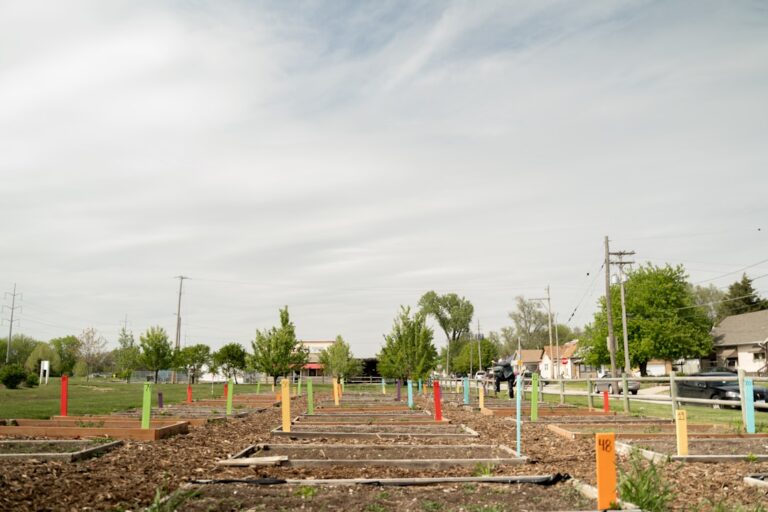Grass roots bands represent a unique and vibrant segment of the music industry, characterized by their organic growth and deep connections to local communities. These bands often emerge from small, intimate settings, such as local bars, coffee shops, and community events, where they cultivate a loyal following through live performances and word-of-mouth promotion. Unlike mainstream artists who may have the backing of major record labels, grass roots bands typically rely on their own resources, creativity, and determination to carve out a niche in the competitive music landscape.
This authenticity resonates with audiences, fostering a sense of belonging and shared experience that is often absent in more commercialized music. The essence of grass roots bands lies in their ability to connect with listeners on a personal level. Their music often reflects the struggles, joys, and stories of everyday life, making it relatable to a diverse audience.
This connection is not merely about the sound; it encompasses the entire experience of engaging with the band, from attending live shows to participating in community events. As these bands grow in popularity, they often maintain their commitment to their roots, ensuring that their music remains a reflection of their experiences and the communities they represent. This dedication to authenticity is what sets grass roots bands apart in an industry increasingly dominated by polished productions and manufactured personas.
Key Takeaways
- Grass roots bands are independent musical groups that often start at a local level and build their fan base through grassroots efforts.
- Grass roots movements in the music industry have the power to challenge traditional music distribution and promotion methods.
- Rising stars in grass roots bands are making waves in the music industry, gaining recognition and success through their hard work and dedication.
- Social media has had a significant impact on the success of grass roots bands, providing a platform for promotion and connection with fans.
- Grass roots bands face challenges such as limited resources and competition, but also experience triumphs in building a dedicated fan base and creating unique music trends.
The Power of Grass Roots Movements in the Music Industry
Grass roots movements have historically played a pivotal role in shaping the music industry, serving as a counterbalance to mainstream commercialism. These movements often arise from a collective desire for authenticity and representation, allowing artists to express themselves freely without the constraints imposed by major labels. The power of grass roots movements lies in their ability to mobilize communities around shared values and experiences, creating a supportive ecosystem for artists to thrive.
This phenomenon can be traced back to various musical genres, including folk, punk, and indie rock, where artists have used their platforms to address social issues and advocate for change. One notable example of this power is the punk rock movement of the late 1970s and early 1980s. Bands like The Ramones and The Clash emerged from local scenes, fueled by a desire to challenge societal norms and express dissent against political and cultural establishments.
Their music resonated with disenchanted youth, leading to a widespread movement that not only influenced music but also fashion, art, and social attitudes. Similarly, contemporary grass roots movements continue to empower artists who seek to address pressing issues such as climate change, social justice, and mental health awareness through their music. By fostering a sense of community and shared purpose, grass roots movements enable artists to amplify their voices and effect meaningful change.
Rising Stars: Grass Roots Band Members Making Waves

In recent years, several members of grass roots bands have gained recognition for their contributions to the music scene, showcasing the potential for success that can arise from humble beginnings. Artists like Phoebe Bridgers and Hozier exemplify this trend; both started in small venues before capturing the attention of larger audiences. Bridgers’ poignant lyrics and emotive performances resonate deeply with listeners, while Hozier’s blend of soul, blues, and folk has garnered him a dedicated fan base.
Their journeys highlight how grass roots bands can serve as incubators for talent that eventually breaks into the mainstream while retaining their authentic sound. Another example is the band The Lumineers, whose rise to fame began with self-released albums and performances at local festivals. Their folk-infused sound and storytelling approach struck a chord with audiences seeking genuine musical experiences.
The Lumineers’ success illustrates how grass roots bands can leverage their local following into broader recognition without compromising their artistic integrity. As these artists continue to evolve, they often bring along the ethos of their grass roots origins, influencing new generations of musicians who aspire to follow in their footsteps.
The Impact of Social Media on Grass Roots Bands
| Metrics | Data |
|---|---|
| Number of social media followers | 10,000 |
| Engagement rate on posts | 15% |
| Increased ticket sales due to social media promotion | 30% |
| Reach of social media advertising campaigns | 100,000 |
| Number of new fans acquired through social media | 500 |
The advent of social media has revolutionized the way grass roots bands connect with their audiences and promote their music.
This immediacy fosters a sense of intimacy between artists and listeners that was previously difficult to achieve.
For many grass roots bands, social media serves as an essential tool for building a loyal fan base without relying on traditional marketing strategies. Moreover, social media has democratized the music industry by enabling artists to reach global audiences from their local scenes. A band can post a video of a live performance or share a new song on platforms like TikTok, potentially going viral overnight.
This phenomenon has led to the emergence of numerous grass roots bands gaining traction through viral trends or challenges. For instance, the band Ocean Alley gained significant attention after their song “Confidence” became popular on TikTok, illustrating how social media can propel lesser-known artists into the spotlight. As these platforms continue to evolve, they will undoubtedly play an increasingly crucial role in shaping the future of grass roots music.
The Challenges and Triumphs of Grass Roots Bands
While grass roots bands enjoy certain advantages in terms of authenticity and community support, they also face significant challenges in navigating the music industry landscape. One major hurdle is financial sustainability; many bands struggle to cover costs associated with recording, touring, and marketing their music. Without the backing of major labels or investors, they often rely on crowdfunding campaigns or merchandise sales to fund their projects.
This financial strain can lead to burnout among band members who juggle multiple jobs while trying to pursue their passion for music. Despite these challenges, many grass roots bands find ways to triumph through resilience and creativity. They often develop innovative strategies for promoting their music and engaging with fans.
For example, some bands host house concerts or intimate gatherings where they can perform directly for supporters in a personal setting. These events not only generate income but also strengthen the bond between artists and their audience. Additionally, collaborations with other local musicians can create opportunities for cross-promotion and shared resources, allowing bands to amplify their reach while maintaining their grassroots ethos.
The Role of Grass Roots Bands in Shaping Music Trends

Pioneering New Sounds
For instance, the rise of indie rock in the early 2000s can be attributed in part to grass roots bands that embraced lo-fi production techniques and DIY aesthetics. This movement not only influenced mainstream music but also inspired countless aspiring musicians to explore their unique voices.
Shaping Musical Landscapes
In recent years, genres such as folk-punk and bedroom pop have gained traction largely due to the efforts of grass roots artists who blend various influences into fresh sounds. Bands like Mumford & Sons revitalized folk music by incorporating elements of rock and pop into their work, while artists like Clairo have popularized bedroom pop through intimate recordings made at home.
Innovative Ideas Resonating with Audiences
These trends reflect how grass roots bands can shape musical landscapes by introducing innovative ideas that resonate with audiences seeking something different from mainstream offerings.
Grass Roots Bands and Community Engagement
Community engagement is a cornerstone of the grass roots band experience; these artists often prioritize building connections within their local environments. Many grass roots bands actively participate in community events, fundraisers, and social initiatives that align with their values. By doing so, they not only strengthen their ties to the community but also use their platform to raise awareness about important issues.
For example, some bands organize benefit concerts for local charities or collaborate with organizations focused on social justice causes. This commitment to community engagement fosters a sense of belonging among fans who feel invested in the band’s mission beyond just the music itself. It creates an environment where audiences are more likely to support these artists through attendance at shows or purchasing merchandise.
Additionally, this engagement can lead to collaborations with other local creatives—such as visual artists or filmmakers—resulting in unique projects that further enrich the cultural fabric of the community.
The Future of Grass Roots Bands in the Music Industry
As we look toward the future of grass roots bands in the music industry, it is clear that they will continue to play an essential role in shaping musical landscapes while fostering community connections. The ongoing evolution of technology—particularly social media—will provide these artists with new avenues for promotion and engagement that were previously unimaginable. As more listeners seek authentic experiences over polished productions, grass roots bands are well-positioned to thrive by staying true to their origins.
Moreover, as societal issues become increasingly intertwined with artistic expression, grass roots bands will likely continue using their platforms for advocacy and change. Their ability to resonate with audiences on personal levels will ensure that they remain relevant in an ever-changing industry landscape. Ultimately, the future holds great promise for grass roots bands as they navigate challenges while embracing opportunities for growth and connection within their communities and beyond.
Grass roots band members often embody the concept of existence preceding essence, as discussed in Sartre’s Concept of Existence Preceding Essence: Challenging Traditional Philosophical Ideas and Embracing Individual Freedom. Just like nonlinear oscillators in conservative Hamiltonian systems, these musicians navigate through unpredictable paths and create unique sounds that resonate with their audience. Additionally, the intersection of ethnography and filmmaking can capture the essence of grass roots bands, showcasing their culture and creativity in visual form as explored in Exploring the Intersection of Ethnography and Filmmaking: Capturing Culture in Visual Form.
FAQs
What is a grass roots band?
A grass roots band is a musical group that operates independently, without the support of a major record label or corporate backing. They often rely on self-promotion, word of mouth, and grassroots marketing to build a fan base and further their career.
What are the characteristics of grass roots band members?
Grass roots band members are typically self-motivated, hardworking, and passionate about their music. They often take on multiple roles within the band, such as booking gigs, promoting their music, and managing their own finances.
How do grass roots band members promote their music?
Grass roots band members often use social media, local performances, and networking to promote their music. They may also distribute their music through online platforms, such as Bandcamp or SoundCloud, and sell merchandise at their shows.
What challenges do grass roots band members face?
Grass roots band members often face challenges such as limited resources, financial constraints, and the need to balance their music career with other jobs or responsibilities. They also have to navigate the competitive music industry without the support of a major label.
What are the benefits of being a grass roots band member?
Grass roots band members have the freedom to create and perform music on their own terms, without the influence of a major record label. They also have the opportunity to build a dedicated fan base and connect with their audience on a more personal level.
























+ There are no comments
Add yours